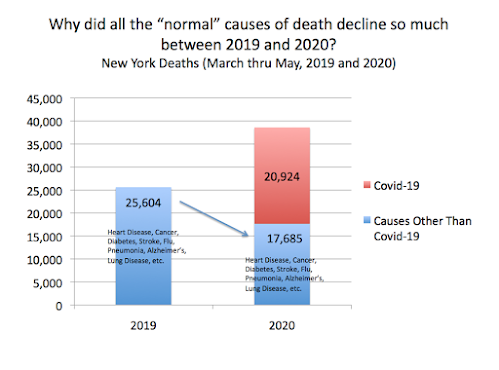There has never been a drug in my lifetime that has been more maligned than Hydroxychloroquine (HCQ).
There has also never been a drug in my lifetime that more doctors, who have used it successfully with their patients, have stepped out to defend and advocate for its use.
When I see something like this I become very curious.
How could there be such a disconnect between doctors who are treating patients and the government bureaucracy that is supposed to be protecting the public health?
How could there be so many positive stories of the effective use of HCQ only to have the FDA or Dr. Fauci claim there is no benefit in using the drug? In fact, the argument is being made that HCQ is actually harmful.
Something else is clearly at play.
Drugs come to market all the time that have long lists of potential side effects. Even then, we often hear that this drug or that drug resulted in serious side effects over time. There are endless cable tv ads by attorneys asking you if you have taken this or that drug and telling you they will sue for the cancer it caused.
HCQ is a drug that has been in existence since 1955. I have seen estimates that during those 65 years over 1 billion doses have been prescribed. I personally know several people who have been on HCQ for long periods of time for lupus and other conditions who have had no problems. They literally could not live a normal life without it. There can be very few drugs in the world that have been used as much and more is known about than HCQ.
What I find interesting is that at the same time that the FDA has been denying the emergency use of HCQ to treat patients in the early stages of Covid-19 (when the drug seems to be most effective) it has granted emergency use authorization of Remdesivir.
Elizabeth Lee Vliet, M.D. explains the gymnastics the FDA is going through to favor Remdesivir (a drug that is still unproven but costs over $3,500 to treat Covid-19) over HCQ ( a generic drug that costs $10 for a course or treatment).
The FDA's denial of the EUA for early outpatient COVID-19 use of HCQ continues the agency's false narrative in claiming outpatient harm for HCQ, based on inpatient data in critically ill patients. Dr. Hahn has ignored established facts of effectiveness and lack of harm for outpatients that have been established in more than 50 recent studies.
The FDA used a standard of "may be effective" for the rapid May 1 EUA given to the experimental anti-viral remdesivir, based on one controlled clinical trial terminated early. Yet FDA is now requiring a higher standard of a randomized controlled clinical trial for the already FDA-approved HCQ in safe use for 65 years. Remdesivir showed very little benefit shown in hospitalized COVID patients and had serious side effects. Nine of the members of the NIH panel relied on for COVID treatment advice were supported financially by Gilead Sciences, maker of remdesivir.
Is it just a coincidence that all of the "bad stuff" we are hearing about HCQ only started at the same time that Gilead determined that they could make a lot of money if HCQ was said to be ineffective and dangerous?
I have learned over the years that when you follow the money you usually get closer to the truth in any issue. Money has a way of talking like nothing else..
However, the money that Gilead might make from Remdesivir cannot possibly explain everything we are seeing in the efforts to malign HCQ and the doctors who have used it successfully.
Something else is in play.
This might be another explanation.
The Federal Food, Drug and Cosmetic Act provides the authority for the FDA to oversee the safety of food, drugs, medical devices, and cosmetics.
The law sets out a strict set of rules to get a drug approved for use in the United States.
This graphic illustrates the steps that have to be accomplished to get approval under the standard rules.
 |
Source: FDA
|
It normally takes years to get approvals of new drugs and vaccines under the law. The law exists to protect the public so the statute contemplates a rigorous period of testing, clinical studies and reviews by the FDA before a drug is approved for the public's use.
However, the statute recognized that there might be times when an "emergency use authorization" was required to provide a short cut around the normal process during public health emergencies.
This is what the FDA says about "emergency use authorizations" on its website.
I have highlighted some important words that are necessary for the FDA to be able to use the EUA authority and disregard the normal process.
The Emergency Use Authorization (EUA) authority allows FDA to help strengthen the nation’s public health protections against CBRN threats by facilitating the availability and use of MCMs needed during public health emergencies.
Under section 564 of the Federal Food, Drug, and Cosmetic Act (FD&C Act), the FDA Commissioner may allow unapproved medical products or unapproved uses of approved medical products to be used in an emergency to diagnose, treat, or prevent serious or life-threatening diseases or conditions caused by CBRN threat agents when there are no adequate, approved, and available alternatives.
What does the law say?
You can only use EUA authority under the law if there are no adequate, approved and available alternatives.
Consider HCQ.
It is available. It is one of the most available drugs in the world.
It has been approved for use against malaria, lupus, and other autoimmune diseases for decades. It has been shown to have minimal side effects with that use.
The only question seems to be whether it is adequate.
Do you now see why no one in authority at the FDA, the NIH or anyone else in a position of government authority can say anything good about HCQ?
If they admit that it can be effective in treating Covid-19 it can be construed that they are saying it is adequate as a treatment.
If that is the case, the law states that all of the drugs and vaccines being rushed into development at the cost of billions of dollars can no longer qualify under the "emergency use authorization" exemption.
These drugs and vaccines would have to comply with the normal approval process that might take years.
It is clear this would be horrible news for the pharma companies who think they might have billions in future sales from these drugs and vaccines. It might also be terrible news for the politicians who want to talk about the promising vaccines and therapeutics on the horizon which are going to save us all.
Less clear is what this means for the general public. The EUA authority may provide us the ability to get a vaccine or other therapeutics to market that is really in the public's best interest. That would be a fantastic development.
However, all of the attacks on HCQ may also be costing thousands of lives in the interim because no one wants to admit that it is adequate to treat Covid-19 if used soon after symptoms present themselves. This may also result in the avoidance of thousands upon thousands of hospitalizations as well.
I understand the potential constraints in the statute but the law can be amended if it is required to deal with this pandemic. That is why we have elected members of Congress. Their job is to legislate based on the needs of the public. Why couldn't they carve out EUA authority during the pandemic which would also not require the FDA and others to summarily reject drugs like HCQ that might have promise?
All of this talk about vaccines and new therapeutic drugs may also be feeding a false narrative to the public that is not based on reality. As a result, it may actually be prolonging the economic and psychological pain that are such big factors in all of this.
It was recently suggested that people would be more likely to return to normal activities if they thought that a vaccine was not a realistic possibility in the near term.
Simply stated, people are willing to sacrifice now with the hope that it will end soon with a vaccine. However, if you told people not to count on a vaccine there would be a totally different mindset. People would have to get on with their lives and make the best of it. There would be no other choice.
Throughout history this is what people had to do in dealing with pandemics. It was not possible to close most businesses, shut down schools for months, have colleges only do remote learning, work from home and buy what you need to live online. You did the best you could but you could not stop daily life. Everyone knew that the alternative would be far worse.
We should know that ourselves but the politicians and public health officials have been playing a game of creeping incrementalism with us.
15 Days to Slow the Spread.
Flatten the Curve.
Keep the Hospitals From Being Overwhelmed.
Ban mass gatherings.
Close bar, restaurants and "nonessential" businesses.
Close the schools.
Wash your hands.
Social distance.
Wear a mask when when you go shopping.
Wear a mask when you are outside.
Keep all of this going a little longer because we will soon have a vaccine and you will be safe and everything will return to normal.
What if the vaccine is not ready by the end of the year? Or next June? Or results in massive side effects?
HCQ may not be a cure but it certainly seems to have proven effective in enough places around the world that it should not be dismissed and the doctors who have shared their experiences denigrated. In a public health emergency why would you want to exclude anything that some doctors have found useful and has a long track record of safety?
Our public health officials are making big bets that something will come of vaccines and drugs under their "emergency use authorizations." The bets do not just involve a lot of taxpayer dollars. They involve people's lives.
What if the simplest and most cost effective answer has been sitting right there under their noses for 65 years?
It is beyond me why politics should be betting people's lives on any side of this.
POSTSCRIPT:
If you are interested in taking a deep dive into all sides of HCQ I recommend you read the following article that a BeeLine reader sent me. (Thanks GS!)
It is well balanced and there is not much "Hydroxychloroquine: A Morality Tale" misses in the story of "how a cheap, well-known drug became a political football in the midst of a pandemic".







































